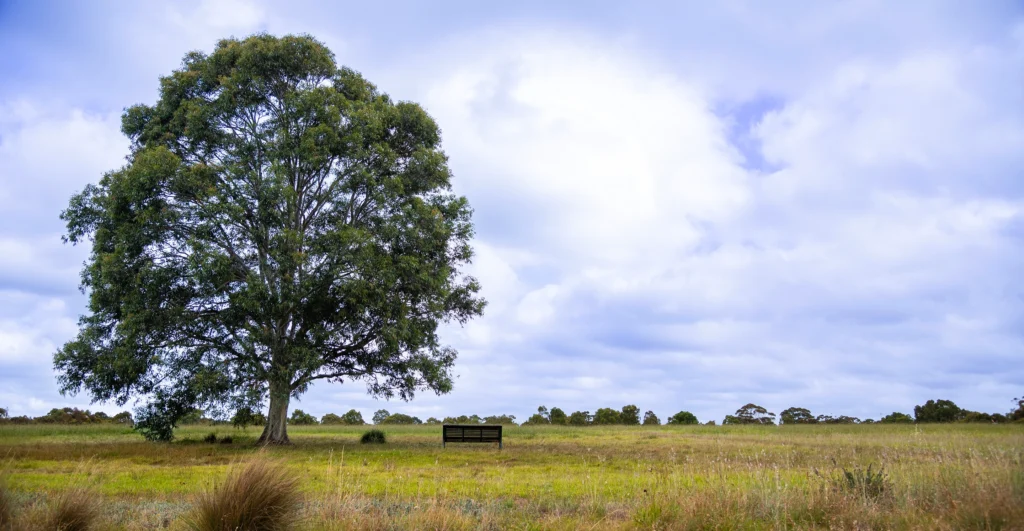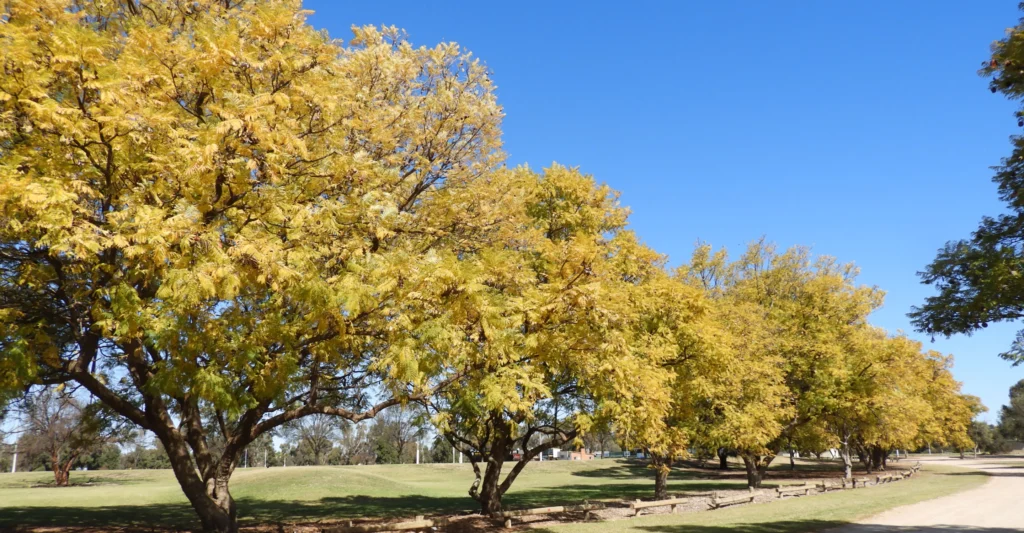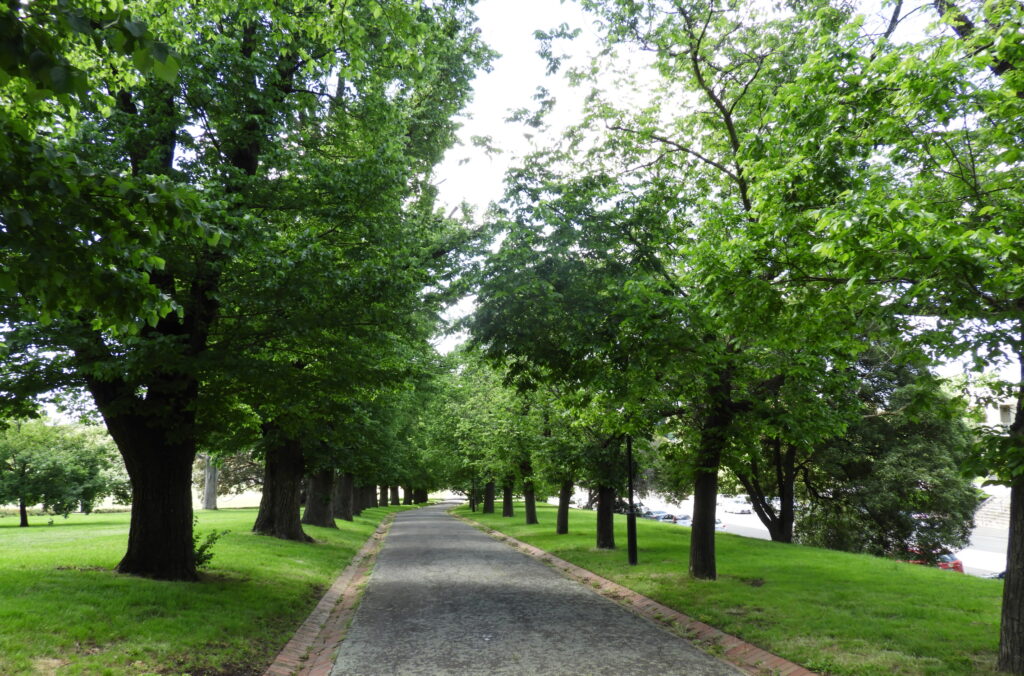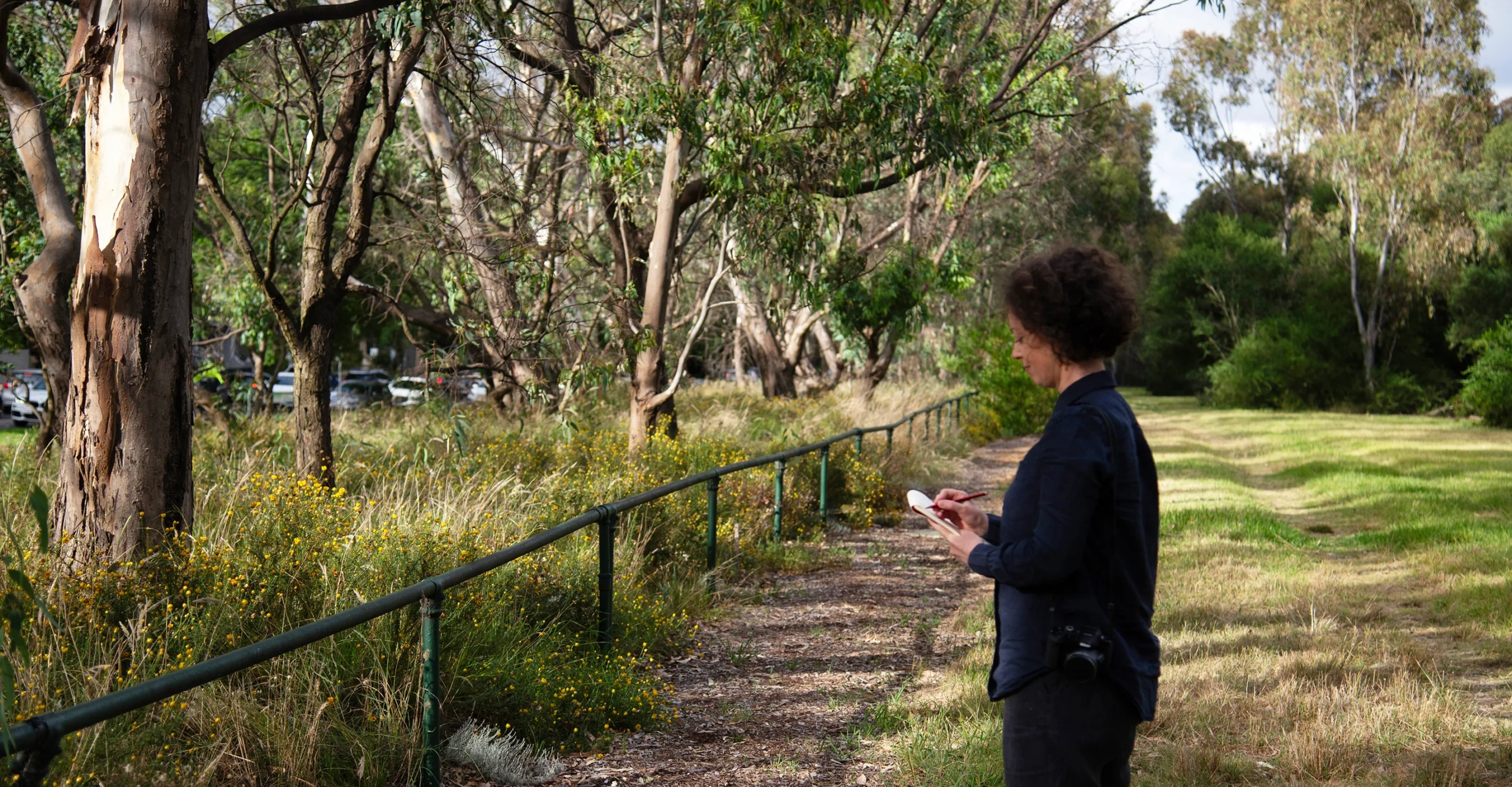
Meet landscape heritage specialist
Dr Christina Dyson
Christina Dyson surveying the recreated native wildflower meadow plantings in Royal Park, a research project by the University of Melbourne with the support of City of Melbourne.
GML Principal Dr Christina Dyson is a landscape heritage specialist with 20+ years’ experience across Victoria, combining research, collaboration and a passion for uncovering layered stories of place.
Can you tell us about your area of expertise and what you most enjoy about working in heritage in Victoria?
I’m a landscape heritage specialist which means a lot of my work involves designed and cultural landscapes, historic trees and plantings, and draws on my background in cultural landscape heritage, Australian designed landscape history, environmental history, and horticulture. Heritage landscapes can be multi-layered, they’re dynamic places (expected and desirable characteristics) and there can be many variables having influenced what is visible on the ground in the present. I love the detective work, unpicking and analysing the evidence, and understanding the many human and environmental factors that have, over time, shaped a place’s present-day form. I’m so fortunate in the extraordinary range of places I get to work on, across Victoria, and really enjoy how many of our projects have a collaborative or multidisciplinary element, and the benefits that come from the different perspectives involved.
What types of projects do you and your team typically work on, and what value do you bring to clients and communities?
My work and the team’s spans conservation management plans, heritage impact assessments, municipal heritage studies and heritage reviews, heritage advice and expert evidence, often at places where landscape, built fabric and community values intersect. Some recent examples include a conservation management plan for Royal Park, which integrated Aboriginal cultural values. This report is now being used—with other important background work undertaken by the City of Melbourne—to inform the development of a new master plan for Royal Park. Working with a GML colleague from our Sydney office, we have recently completed Heritage Landscape Guidelines for a local shire council in Sydney, which was an exciting project for me as it was the area where I grew up. The City of Yarra LGBTIQA+ Heritage Studies, carried out with my colleagues Freya Keam, Chairim Byun and Mark Huntersmith and Way Back When Consulting Historians, perhaps exemplifies one aspect of the value our work brings to clients and communities, in the way it prioritised and foregrounded consultation and engagement and community values.
Is there a recent project in Victoria that stands out for you, and what made it rewarding or challenging?
I’d have to say it’s a place that stands out for me; Royal Park, which is a large area of parkland north of central Melbourne, set aside in the 1840s as an integral element in Lieutenant-Governor Charles La Trobe’s vision of Melbourne as a city surrounded by extensive public parklands. Reflecting on my 20+ years in heritage practice, Royal Park has been career defining, and the focus of a number of projects over the past decade. It was a case study for my PhD, which explored the different ways in which gardens and designed landscapes can express national identity. Drawing on my PhD research, I prepared documentation to support a nomination for Royal Park to the Victorian Heritage Register, at a tense time in the park’s history, when a major road project was proposed that would have dramatically changed the park’s distinctive landscape qualities. I then provided expert evidence on the park’s heritage values at an independent planning panel for the aforementioned infrastructure project. It was an exciting moment when Royal Park was included in the VHR in 2014! In recent years I’ve been involved in a number of projects for the City of Melbourne, providing heritage advice on works to ensure the park’s use for active and passive recreation and its community values can be sustained while respecting its heritage values.
Long involvement with this place has been incredibly rewarding, in large part because of the people I’ve met and worked with, learned from and been inspired by along the way, including the designers of the 1984 Royal Park master plan, Ron Jones and the late Brian Stafford (1943-2024). This was amplified last year through using Royal Park as the focus for studio and assessment work in the University of Melbourne’s Urban and Landscape Heritage Master’s subject, and seeing the next generation of heritage professionals, landscape architects, urban planners and architects get excited and passionate about this place. Now, observing the process of bringing a new master plan into fruition is equally rewarding.
From your perspective, what are the key opportunities or challenges for heritage practice in Victoria right now?
Many historic gardens and cultural landscapes embody complex layers and shared values, but they don’t always express their stories well. So, a challenge and opportunity for heritage practice in Victoria and elsewhere is to find respectful and creative ways to communicate the less obvious or obscured values. Our changing climate presents another challenge that demands rethinking and reconsideration of how we approach conservation of significant cultural landscapes to ensure that these places remain relevant and viable into the future.
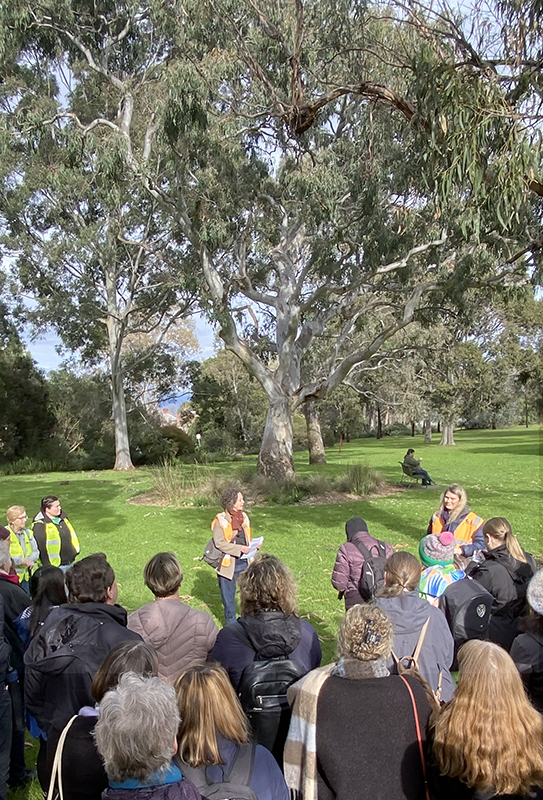
Christina, with GML colleague Helen Doyle, leading a walking tour through Melbourne’s Royal Park during Open House Melbourne.

